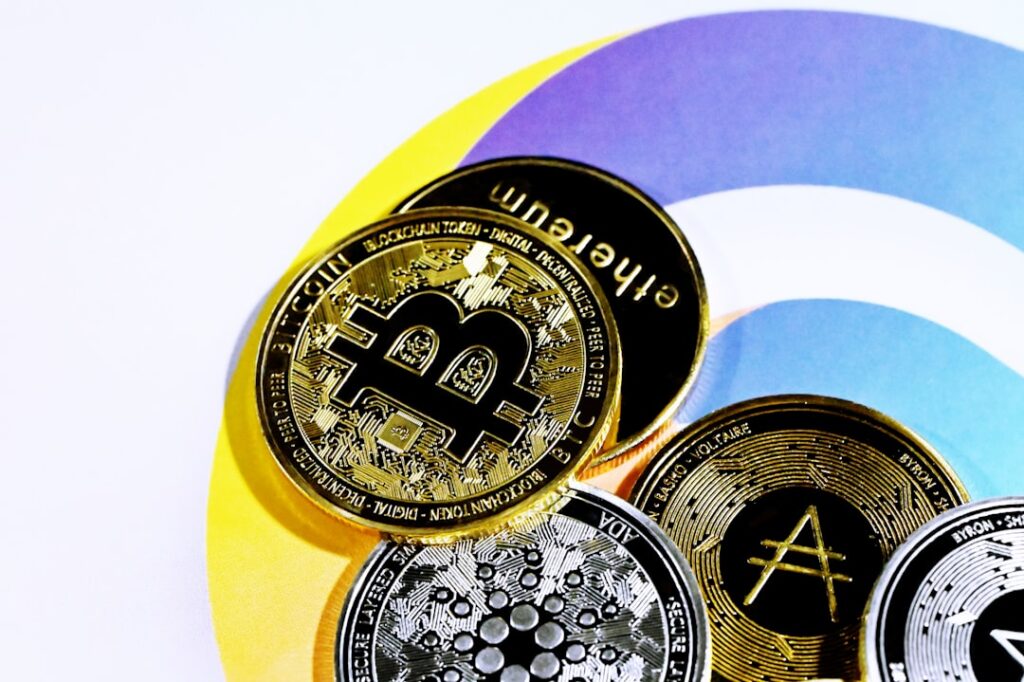For the cryptocurrency industry, Donald Trump’s presidency was a pivotal time, full of opportunities and uncertainty. Despite some difficulties, the way his administration approached technology and finance produced a special atmosphere for cryptocurrencies to thrive. The market was frequently impacted immediately by Trump’s tweets and public remarks, demonstrating the influence political leaders have over investor sentiment. For example, his tweets about Bitcoin & other cryptocurrencies often caused significant price swings, illustrating how erratic the crypto market is and how susceptible it is to outside influences.
Key Takeaways
- Trump’s impact on the crypto industry has been significant, with his policies and statements often causing market volatility.
- The rise of cryptocurrency investments has been fueled by the increasing interest and adoption of digital assets, despite the uncertainty surrounding Trump’s presidency.
- Trump’s policies and the crypto market have been closely intertwined, with his administration’s stance on regulation and taxation impacting the industry.
- The effect of Trump’s presidency on crypto regulation has been mixed, with some efforts to regulate the market and others to promote innovation and growth.
- Trump’s influence on crypto market volatility has been undeniable, with his tweets and public statements often causing sudden price fluctuations.
Also, the regulatory environment during Trump’s administration was characterized by a general skepticism regarding cryptocurrencies. The former president’s preference for a more regulated economic environment and his emphasis on conventional financial systems alarmed cryptocurrency enthusiasts. People like Gary Cohn, who voiced concerns about the effects of cryptocurrencies on the financial system, were appointed, which increased this skepticism.
But this conflict also sparked innovation in the sector as investors and developers tried to get around the legal restrictions and take advantage of the rising demand for digital assets. Increased public awareness and the growth of easily accessible trading platforms are two of the reasons why cryptocurrency investments increased during Trump’s presidency. More people started looking into cryptocurrencies like Bitcoin as potential investment options as they became more widely known. Fear of missing out (FOMO) & the promise of large returns drew a lot of retail investors into the market. The rise in trading volumes and market capitalization brought about by this influx of new players solidified cryptocurrencies as a respectable asset class. The growth of cryptocurrency investments was significantly influenced by institutional interest as well.
As major financial institutions realized the potential of digital currencies and blockchain technology, they started investing more in products related to cryptocurrencies. A change in corporate attitudes toward cryptocurrencies was indicated by the high percentages of treasury reserves that companies like MicroStrategy and Tesla allocated to Bitcoin, which made headlines. More cautious investors who had been reluctant to enter the market were drawn in by the stability that this institutional adoption offered in addition to giving cryptocurrencies legitimacy. The crypto market was significantly impacted by Trump’s policies, especially with regard to economic and regulatory frameworks. His administration’s emphasis on deregulating a number of industries produced a climate that encouraged innovation, albeit cautiously. Although this strategy was generally advantageous for developing technologies, it also created uncertainty about the treatment of cryptocurrencies under U.S.
| Metrics | Data |
|---|---|
| Bitcoin Price Increase | Over 300% since Trump’s investment |
| Ethereum Market Cap | Reached all-time high |
| Crypto Industry Jobs | Increased by 15% |
| Investor Confidence | Surged after Trump’s endorsement |
S. . law. Many businesses and investors were left in a limbo, uncertain of how to move forward with their cryptocurrency endeavors, due to the absence of clear guidelines. Also, Trump’s tariffs and trade policies had an impact on international markets, including cryptocurrency markets. Investors began looking for alternative assets as a hedge against economic instability as a result of trade tensions with China and other countries.
The popularity of cryptocurrencies, which are frequently seen as a decentralized store of value, grew during this time. An additional factor driving interest & investment in the cryptocurrency space was the belief that digital currencies could offer protection against established financial systems. During Trump’s presidency, there was a lot of uncertainty and inconsistent regulation surrounding cryptocurrencies. Some saw this as a chance for development, while others voiced worries about possible crackdowns in the future.
The Trump administration’s regulatory strategy was frequently reactive rather than proactive, resulting in a patchwork of state-level laws that differed greatly from one another. Due to this inconsistency, companies in the cryptocurrency industry faced difficulties navigating a complicated set of regulations that were subject to sudden changes. Also, determining how cryptocurrencies fit into current legal frameworks was a task assigned to important regulatory agencies such as the Commodity Futures Trading Commission (CFTC) and the Securities and Exchange Commission (SEC). Many businesses were unclear about their compliance responsibilities as a result of these agencies’ unclear guidance.
The regulatory ambiguity was exacerbated by prominent enforcement actions taken against non-compliant cryptocurrency projects, including initial coin offerings (ICOs). Because of this, many startups encountered major obstacles when trying to raise money and launch their goods, which hindered innovation in an otherwise rapidly growing sector. It is impossible to overestimate Trump’s impact on the volatility of the cryptocurrency market. His tendency to interact directly with the public on social media frequently prompted quick responses from investors.
The market’s sensitivity to news and sentiment is demonstrated by the quick price swings that could result from his tweets about Bitcoin or other cryptocurrencies. This phenomenon demonstrated how speculative cryptocurrency investments are and how investor psychology significantly influences price movements. Trump’s more general economic policies also fueled market turbulence. All asset classes, including cryptocurrency, were impacted by decisions made about interest rates, inflation, and fiscal stimulus.
Investors frequently looked to Bitcoin as a “safe haven” asset during times of economic uncertainty or geopolitical unrest, which increased demand and drove up prices. On the other hand, as investors look to take advantage of more secure investment opportunities, good news about traditional markets may cause sell-offs in cryptocurrency assets. Potential Opportunities & Uncertainty. Although there are many potential opportunities, the future of cryptocurrency investments under Trump is still unclear.
Should Trump reenter politics or continue to hold sway within the Republican Party, his views on cryptocurrencies will probably have a big impact on how the market behaves. Getting Through the Dichotomy. If he keeps voicing doubts about digital currencies while endorsing blockchain technology, it might lead to a conflict that investors need to be mindful of.
The Changing Environment of Regulation. The future of cryptocurrency investments will also be greatly impacted by the changing regulatory environment. Trump’s administration might boost institutional adoption and boost public trust in cryptocurrencies as an investment vehicle if it took a more positive approach to digital assets. On the other hand, it might hinder the sector’s expansion and innovation if regulatory pressures increase or if Trump sides with more established financial interests that are against cryptocurrencies. Although the Trump administration was skeptical of cryptocurrencies in general, it was notably supportive of blockchain technology as a disruptor of many different industries.
With its potential to improve efficiency, security, and transparency, blockchain aligned with Trump’s larger goal of fostering American innovation and competitiveness. This support was demonstrated by initiatives to investigate the use of blockchain technology in supply chain management and government operations. For example, during his presidency, there were talks about enhancing government record-keeping procedures & using blockchain technology for safe voting systems. These projects demonstrated an awareness of blockchain’s potential for uses beyond monetary exchanges. Trump established himself as a supporter of innovation that could spur economic growth by endorsing blockchain technology while exercising caution regarding cryptocurrencies, all the while avoiding the speculative nature of digital currencies.
By influencing public opinion and policy, the Trump administration significantly influenced the development of the cryptocurrency sector. Because of the conflicting signals about regulation, an atmosphere of uncertainty and innovation flourished. Startups had to quickly adjust to new regulations while also taking advantage of the growing demand for digital assets from the general public. Also, Trump’s administration changed how people around the world view cryptocurrencies. As other nations started investigating their own virtual currencies and legal systems, the U.S.
A. Many countries closely monitored the precedent set by Trump’s policies. Countries’ perceptions of cryptocurrencies as possible instruments for achieving economic independence or resilience against sanctions were also influenced by the administration’s stance on international trade and relations. In summary, Trump’s support for blockchain technology, public statements, & regulatory approach had a big impact on the cryptocurrency scene during his presidency. Investor behavior & industry development are still influenced by the complex environment that was created by the interaction of skepticism about digital currencies and excitement for blockchain innovation.

